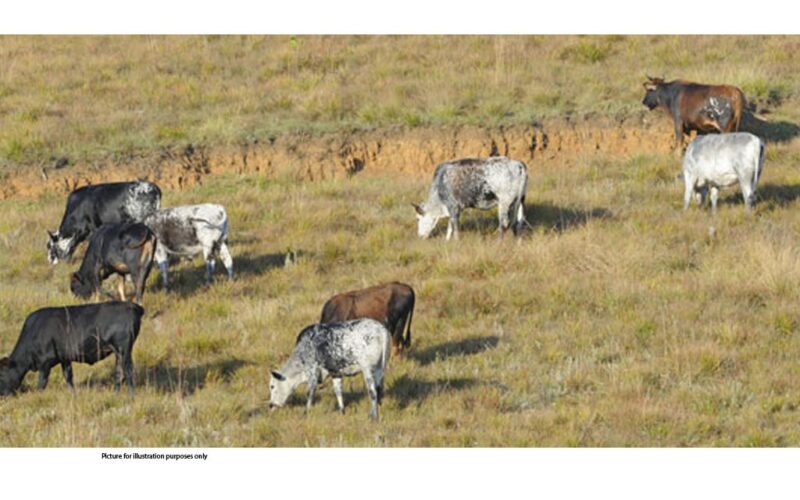Niël Terblanché
THE Namibia Annual Livelihood Vulnerability Assessment and Analysis which is currently underway, is set to present the actual number of food insecure people in the country.
According to the January 2023 report’s projections, it is estimated that 234 000 people, representing nine percent of the population are experiencing high food insecurity.
The Agro Business Information Services Unit in the Ministry of Agriculture, Water and Land Reform and the Namibia Meteorological Service, with technical and financial assistance from the Food and Agricultural Organization of the United Nations (FAO) and the National Aeronautics and Space Administration (NASA Harvest) undertook the second post-harvest Crop and Household Food Security Monitoring Assessment in seven major communal crop-producing regions from 8 May to 6 June 2023.
The main purpose of the assessment was to assess and quantify the 2023 crop harvest in the major crop-growing regions of Namibia and provide early warning reports on geographic locations of agronomic anomalies, the effects of floods and droughts, and other significant events.
The mission assessed changes in household food security, livestock, water supply and grazing conditions.
The mission found that the food security situation has significantly deteriorated as a result of highly unfavourable agricultural production during the 2022/2023 cropping season.
It has been observed that the majority of crop farmers have experienced crop failure, which has consequently severely impeded their ability to replenish their food reserves.
A considerable number of households in the key communal crop-producing regions have reported a depletion of their harvest from the previous season, and they are now relying mainly on the market and drought relief food in some regions, for sustenance.
The assessment projects that recent harvests will be exhausted between August and December 2023, leaving these households in a precarious state of food insecurity.
According to the report, the food security situation typically tends to improve starting from March as seasonal crops like squash, melons, and legumes become ready for consumption. The current drought conditions have, however, resulted in limited availability of these crops.
In the Zambezi region, the household food security situation has not seen substantial improvement despite the recent harvest.
Farmers reported a meagre harvest, which is expected to only sustain households until September 2023.
Normally, farmers in this region sell most if not all of their harvest and use the earnings to purchase additional food and other basic necessities.
The poor harvest this year did not leave much of a surplus to sell, and the harvest is primarily intended for household consumption.
According to the report, the situation in the Kavango East and Kavango West regions emulate each other. Both regions have experienced a disappointing harvest while some farmers did not harvest anything.
In the northern central regions of Omusati, Ohangwena, Oshana, and Oshikoto, the situation regarding household food security is worsening.
According to the report, the majority of households have experienced a significantly poor harvest this season which is estimated to last only for a period of two to three months from the harvesting period.
Households indicated that they have depleted the last year’s grain reserves and are now highly dependent on the market for food access.
The report states that the household food security situation in southern, eastern, and central Namibia is also poor as a result of a poor agricultural season.
These areas primarily rely on livestock farming for the sustenance of livelihoods.
Grazing conditions in these parts of the country are insufficient and dry, which may not adequately support livestock throughout the dry season.
Meanwhile, the Cabinet has directed the Office of the Prime Minister to provide food assistance to drought-affected households in Omaheke, Hardap and //Kharas Regions from 1st July 2023 to 31st March 2024, in addition to Kunene, parts of Erongo and Omusati Regions that has been receiving food assistance for the past few years.
Cabinet also directed the Ministry of Agriculture, Water and Land Reform to provide the affected regions with the Livestock Support Programme (LSP) from 1 July to 31t December 2023, and also to consider the extension of the LSP in Kunene, parts of Erongo and parts of Omusati Regions.
The interventions within LSP encompass various initiatives, including livestock marketing incentives, subsidies for the lease of grazing, as well as subsidies for the transportation of livestock to and from grazing areas.
The implementation of the LSP followed a rapid assessment by the Office of the Prime Minister in Omaheke, Hardap and //Kharas Regions, with the primary objective of assessing the impact of drought on the targeted population’s livelihoods and identifying urgent needs that would necessitate government interventions.
The prevalence of food-insecure households continues to increase, exacerbated by the recent erratic rainfall patterns that have led to a significant decline in agricultural production. According to the report, the situation will deteriorate further throughout the remainder of the year, necessitating an expanded provision of food assistance to accommodate a larger population that will be in need.




